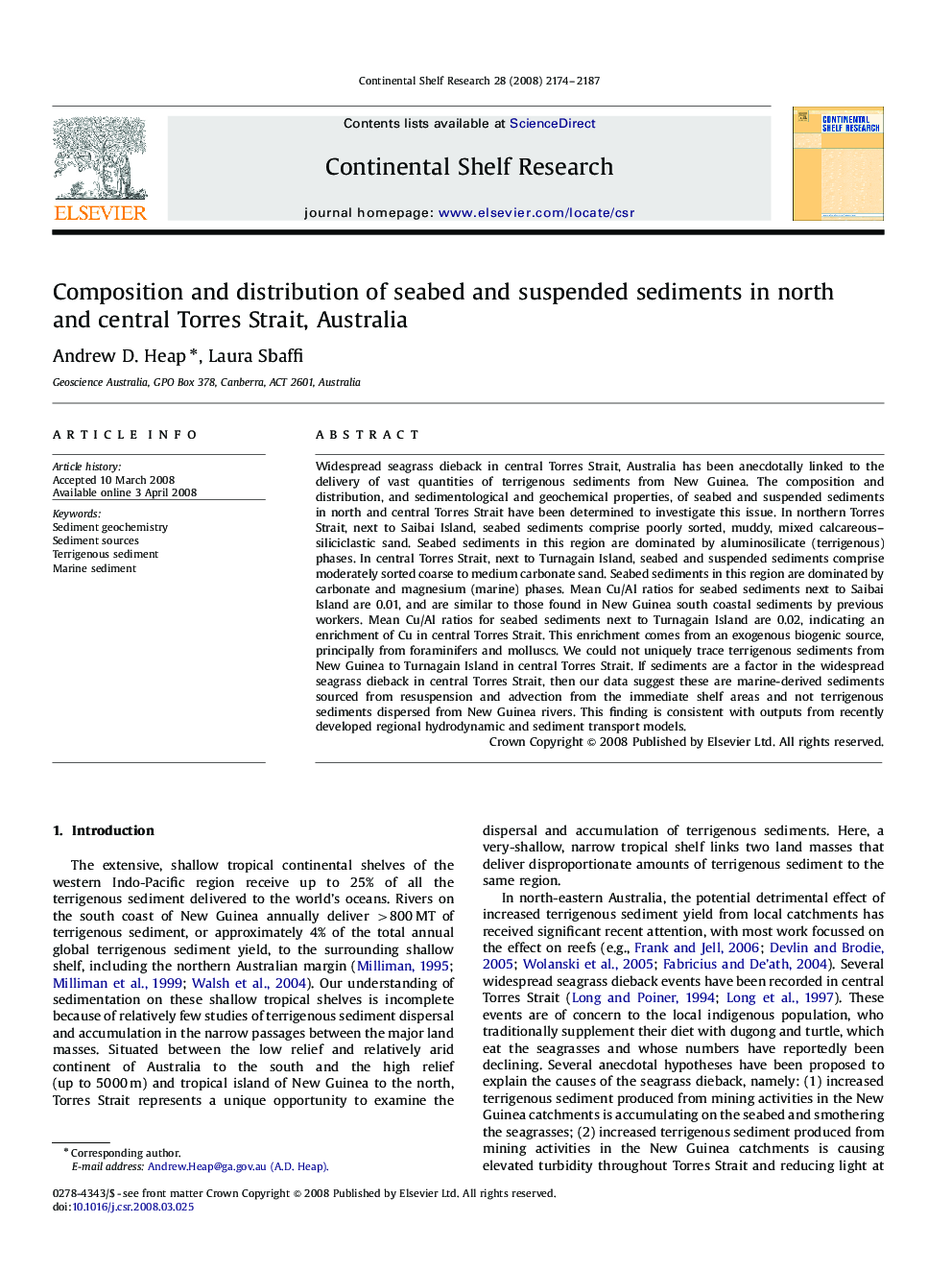| Article ID | Journal | Published Year | Pages | File Type |
|---|---|---|---|---|
| 4533328 | Continental Shelf Research | 2008 | 14 Pages |
Widespread seagrass dieback in central Torres Strait, Australia has been anecdotally linked to the delivery of vast quantities of terrigenous sediments from New Guinea. The composition and distribution, and sedimentological and geochemical properties, of seabed and suspended sediments in north and central Torres Strait have been determined to investigate this issue. In northern Torres Strait, next to Saibai Island, seabed sediments comprise poorly sorted, muddy, mixed calcareous–siliciclastic sand. Seabed sediments in this region are dominated by aluminosilicate (terrigenous) phases. In central Torres Strait, next to Turnagain Island, seabed and suspended sediments comprise moderately sorted coarse to medium carbonate sand. Seabed sediments in this region are dominated by carbonate and magnesium (marine) phases. Mean Cu/Al ratios for seabed sediments next to Saibai Island are 0.01, and are similar to those found in New Guinea south coastal sediments by previous workers. Mean Cu/Al ratios for seabed sediments next to Turnagain Island are 0.02, indicating an enrichment of Cu in central Torres Strait. This enrichment comes from an exogenous biogenic source, principally from foraminifers and molluscs. We could not uniquely trace terrigenous sediments from New Guinea to Turnagain Island in central Torres Strait. If sediments are a factor in the widespread seagrass dieback in central Torres Strait, then our data suggest these are marine-derived sediments sourced from resuspension and advection from the immediate shelf areas and not terrigenous sediments dispersed from New Guinea rivers. This finding is consistent with outputs from recently developed regional hydrodynamic and sediment transport models.
